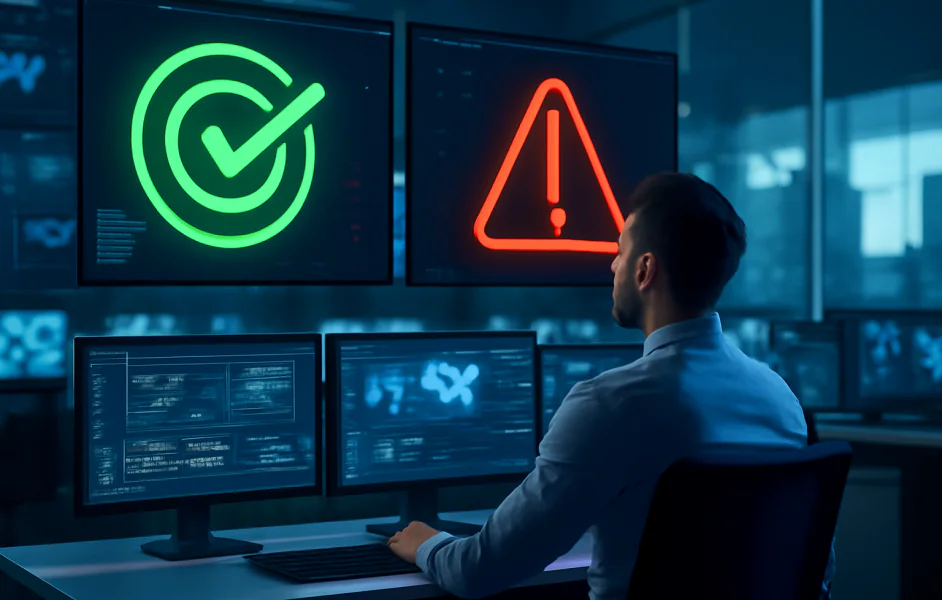Cyberattacks are now not guide, linear operations. With AI now embedded into offensive methods, attackers are creating polymorphic malware, automating reconnaissance, and bypassing defenses sooner than many safety groups can reply. This isn’t a long term situation, it’s taking place now.
On the similar time, maximum safety defenses are nonetheless reactive. They depend on figuring out recognized signs of compromise, making use of ancient assault patterns, and flagging dangers in line with severity rankings that would possibly not mirror the actual risk panorama. Groups are crushed by means of quantity, no longer perception, developing an excellent atmosphere for attackers to be successful.
The trade’s legacy mindset constructed round compliance checklists, periodic checks, and fragmented tooling has develop into a legal responsibility. Safety groups are running more difficult than ever, but continuously solving the incorrect issues.
Why This Hole Exists
The cybersecurity trade has lengthy leaned on possibility rankings like CVSS to prioritize vulnerabilities. On the other hand, CVSS rankings don’t mirror the real-world context of a company’s infrastructure comparable to whether or not a vulnerability is uncovered, reachable, or exploitable inside of a recognized assault course.
Because of this, safety groups continuously spend precious time patching non-exploitable problems, whilst attackers to find inventive techniques to chain in combination lost sight of weaknesses and bypass controls.
The placement is additional difficult by means of the fragmented nature of the protection stack. SIEMs, endpoint detection and reaction (EDR) programs, vulnerability control (VM) equipment, and cloud safety posture control (CSPM) platforms all perform independently. This siloed telemetry creates blind spots that AI-enabled attackers are more and more adept at exploiting.
Signature-Based totally Detection Is Fading
One of the crucial relating to tendencies in trendy cybersecurity is the diminishing worth of conventional detection strategies. Static signatures and rule-based alerting had been efficient when threats adopted predictable patterns. However AI-generated assaults don’t play by means of the ones regulations. They mutate code, evade detection, and adapt to controls.
Take polymorphic malware, which adjustments its construction with each and every deployment. Or AI-generated phishing emails that mimic government communique types with alarming accuracy. Those threats can slip previous signature-based equipment solely.
If safety groups proceed to depend on figuring out what has already been noticed, they’ll stay one step in the back of adversaries who’re often innovating.
Regulatory Power Is Mounting
The issue is not just technical, it is now regulatory. The U.S. Securities and Exchange Commission (SEC) not too long ago offered new cybersecurity disclosure regulations, requiring public firms to record subject material cybersecurity incidents and describe their possibility control methods in genuine time. In a similar way, the European Union’s Digital Operational Resilience Act (DORA) calls for a shift from periodic checks to steady, validated cyber possibility control.
Maximum organizations aren’t ready for this shift. They lack the facility to offer real-time checks of whether or not their present safety controls are efficient towards as of late’s threats, particularly as AI continues to conform the ones threats at device pace.
Danger Prioritization Is Damaged
The core problem lies in how organizations prioritize paintings. Maximum nonetheless lean on static possibility scoring programs to decide what will get mounted and when. Those programs hardly account for the surroundings by which a vulnerability exists, nor whether or not it’s uncovered, reachable, or exploitable.
This has resulted in safety groups spending important time and assets solving vulnerabilities that aren’t attackable, whilst attackers to find techniques to chain in combination lower-scoring, lost sight of problems to achieve get admission to. The standard “to find and attach” style has develop into an inefficient and continuously useless solution to arrange cyber possibility.
Safety should evolve from reacting to indicators towards figuring out adversary conduct—how an attacker would in fact transfer thru a device, which controls they may bypass, and the place the actual weaknesses lie.
A Higher Manner Ahead: Proactive, Assault-Trail-Pushed Protection
What if, as an alternative of reacting to indicators, safety groups may often simulate how genuine attackers would attempt to breach their atmosphere, and attach handiest what issues maximum?
This means, continuously known as steady safety validation or attack-path simulation, is gaining momentum as a strategic shift. Relatively than treating vulnerabilities in isolation, it maps how attackers may chain misconfigurations, id weaknesses, and susceptible belongings to succeed in essential programs.
Through simulating adversary conduct and validating controls in genuine time, groups can focal point on exploitable dangers that in fact disclose the industry, no longer simply those flagged by means of compliance equipment.
Suggestions for CISOs and Safety Leaders
Right here’s what safety groups must prioritize as of late to stick forward of AI-generated assaults:
- Put in force Steady Assault Simulations Undertake automatic, AI-driven adversary emulation equipment that check your controls the way in which genuine attackers would. Those simulations must be ongoing no longer simply reserved for annual pink group workout routines.
- Prioritize Exploitability Over Severity Transfer past CVSS rankings. Incorporate assault course research and contextual validation into your possibility fashions. Ask: Is that this vulnerability reachable? Can it’s exploited as of late?
- Unify Your Safety Telemetry Consolidate information from SIEM, CSPM, EDR, and VM platforms right into a centralized, correlated view. This allows attack-path research and improves your skill to locate advanced, multi-step intrusions.
- Automate Protection Validation Shift from guide detection engineering to AI-powered validation. Use device studying to verify your detection and reaction methods evolve along the threats they’re supposed to forestall.
- Modernize Cyber Chance Reporting Change static possibility dashboards with real-time publicity checks. Align with frameworks like MITRE ATT&CK to display how your controls map to real-world risk behaviors.
Organizations that shift to steady validation and exploitability-based prioritization can be expecting measurable enhancements throughout a couple of dimensions of safety operations. Through focusing handiest on actionable, high-impact threats, safety groups can cut back alert fatigue and do away with distractions brought about by means of false positives or non-exploitable vulnerabilities. This streamlined focal point allows sooner, more practical responses to genuine assaults, considerably lowering reside time and bettering incident containment.
Additionally, this means complements regulatory alignment. Steady validation satisfies rising calls for from frameworks just like the SEC’s cybersecurity disclosure regulations and the EU’s DORA law, either one of which require real-time visibility into cyber possibility. In all probability most significantly, this technique guarantees extra environment friendly useful resource allocation and lets in groups to take a position their time and a focus the place it issues maximum, somewhat than spreading themselves skinny throughout a limiteless floor of theoretical possibility.
The Time to Adapt Is Now
The generation of AI-driven cybercrime is now not a prediction, it’s the existing. Attackers are the usage of AI to seek out new paths in. Safety groups should use AI to near them.
It’s no longer about including extra indicators or patching sooner. It’s about realizing which threats subject, validating your defenses often, and aligning technique with real-world attacker conduct. Most effective then can defenders regain the higher hand in a global the place AI is rewriting the foundations of engagement.
Source link

